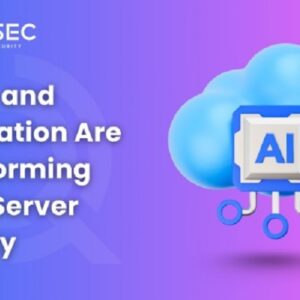
In the field of diagnostic imaging, knowing the main variations between a CAT scan vs MRI test is crucial especially in a mobile-first society when people often search medical information on their cellphones before visiting an emergency room. Since flexible web design is a fundamental part of digital healthcare systems, users now more than ever need to quickly obtain dependable, easily navigable information.
Online platforms, especially those providing emergency services—must show unambiguous, well-organized content as technology develops in both the digital sphere and the medical one. Knowing when to choose an MRI or a CT scan will enable patients, particularly if symptoms demand quick medical attention, make wise judgments. Five startling variations below not only set apart these tests but also emphasize the requirement of a responsive healthcare digital presence.

1. Imaging Technology: Magnetic Fields Against X-rays
A CAT scan and an MRI test vary most fundamentally in their picture generating technique. Using ionizing radiation X-rays a CAT scan, sometimes referred to as a CT scan, produces finely detailed cross-sectional pictures of the body. For rapid identification of interior injuries and bleeding especially, this method is quite successful.
Conversely, an MRI scan generates comprehensive images—especially of soft tissues including the brain, muscles, and ligaments—by means of strong magnets and radio waves. MRI scans are safer in particular long-term use situations since there is no radiation involved. Responsive medical websites have to show this information clearly and without too much medical language in a society when consumers search for quick comparisons.
2. Speed of Diagnosis in Emergency Settings
The way these two instruments handle crises is among the more unexpected features of this comparison. When time is of the essence—as in trauma or stroke cases a CAT scan is typically recommended as it is faster—sometimes finished in less than five minutes.
On the other hand, depending on the intricacy of the scan, an MRI exam could last anywhere from thirty minutes to more than an hour. Websites providing emergency services should highlight this distinction in a neat, mobile-friendly way. Google’s mobile-first indexing guarantees that, thanks to adaptable content layouts, users looking for “what’s faster in an emergency, a CT or MRI” get the answer straight immediately.
3. Image Detail and Diagnostic Accuracy
Image detail forms the third startling disparity. CAT scans lack the great contrast detail of an MRI, even if they are great for seeing bone fractures, lung diseases, and malignancies.
MRI scans give soft tissue images of excellence. This makes them perfect for internal organ, brain, spinal cord, and joint diagnosis of disorders. A mobile-first design guarantees that these differences are shown with labeled pictures and collapsing content portions, therefore facilitating easy digestion even on small screens.
4. Suitability for Certain Patients
Furthermore noteworthy is how various kinds of patients are affected by these imaging examinations. For those needing repeated scans, a CAT scan can be dangerous because of the total radiation exposure. Though usually safe, unless absolutely required, it is not the recommended choice for small children or pregnant women.
Conversely, MRI exams are not appropriate for patients with some implants like pacemakers or metal clips even if they are free of radiation. These gadgets can get interference from the magnetic field. On responsive medical websites, these safety issues should be precisely stated so visitors may acquire vital information fast.
To increase user experience and performance, responsive platforms providing emergency services should take into account structured data and mobile-optimized drop-down FAQs.
5. Cost and Accessibility
The sixth factor that sometimes surprises patients is the difference in accessibility and cost. Many emergency and outpatient environments turn to CAT scans since they are generally less expensive and more widely accessible.
Though more costly, MRI scans provide a degree of information unparalleled. But especially in underprivileged communities, the great expense and limited availability can complicate access. Mobile-first educational websites should prominently show these expenses in a user-friendly, foldable pricing table fit for tiny screen sizes.
Why Mobile-First Presentation Matters in Healthcare
Healthcare providers—especially those engaged in emergency services—must embrace flexible web design and clean URL practices as mobile usage continues to dominate, particularly for consumers looking for fast, accurate medical information. Using a mobile-first strategy guarantees that consumers looking for the variations between a CAT Scan and MRI Test will come across comprehensive, easily available material that fits any device exactly.
Conclusion
More than ever, knowing the main distinctions between a CAT scan and MRI test is crucial, especially in a time when consumers demand quick, mobile-friendly access to accurate medical information. Every difference—from the imaging technique to speed to diagnostic accuracy to patient appropriateness to cost—is vital in emergency decision-making.
Using a mobile-first responsive design guarantees users of healthcare websites—especially those providing emergency services—have access to this essential knowledge wherever and wherever they most need it. Fast loading speeds, optimized content, and clean URLs are not only recommended practices; they are also absolutely vital elements of effective digital healthcare delivery.
Author Profile
- I am the owner of the blog readree.com. My love for technology began at a young age, and I have been exploring every nook and cranny of it for the past eight years. In that time, I have learned an immense amount about the internet world, technology, Smartphones, Computers, Funny Tricks, and how to use the internet to solve common problems faced by people in their day-to-day lives. Through this blog, I aim to share all that I have learned with my readers so that they can benefit from it too. Connect with me : Sabinbaniya2002@gmail.com
Latest entries
 Artificial IntelligenceJuly 1, 2025How AI and Automation Are Transforming Cloud Server Security
Artificial IntelligenceJuly 1, 2025How AI and Automation Are Transforming Cloud Server Security Digital MarketingJune 28, 2025How to Set Conditional Free Shipping Thresholds in WooCommerce
Digital MarketingJune 28, 2025How to Set Conditional Free Shipping Thresholds in WooCommerce BangaloreJune 27, 2025Does It Snow In South India? Exploring Snowfall Destination
BangaloreJune 27, 2025Does It Snow In South India? Exploring Snowfall Destination Digital MarketingJune 27, 2025WhatsApp Notifications for WooCommerce: Benefits and Tips
Digital MarketingJune 27, 2025WhatsApp Notifications for WooCommerce: Benefits and Tips